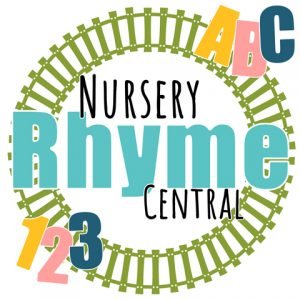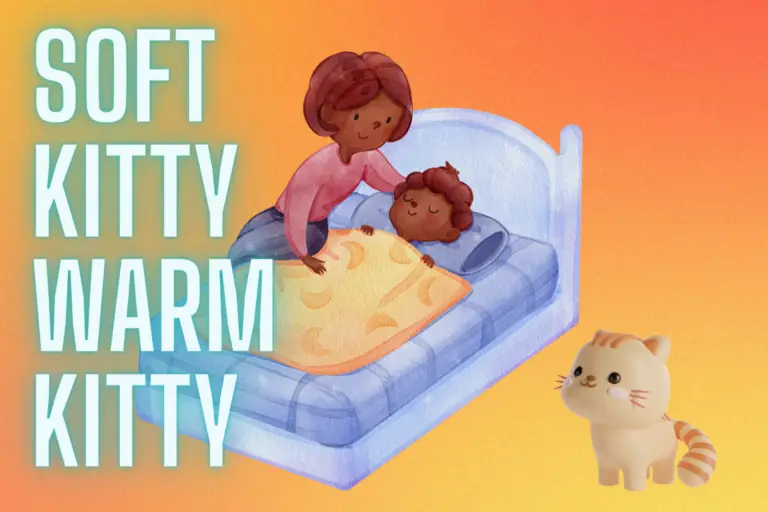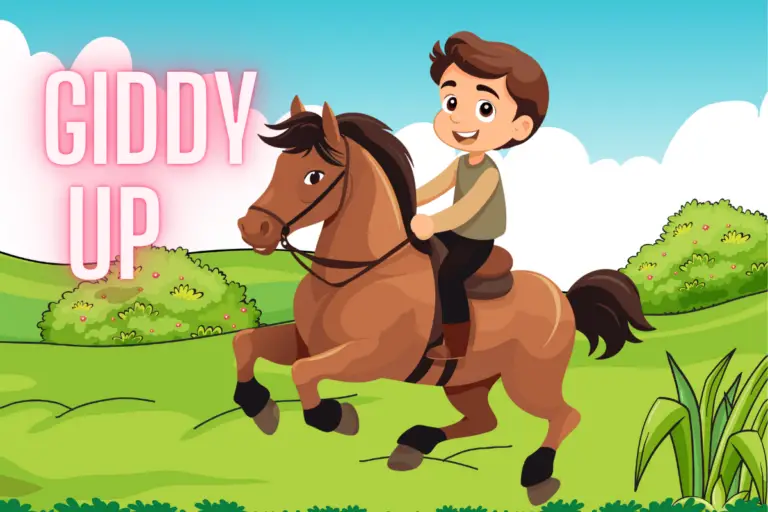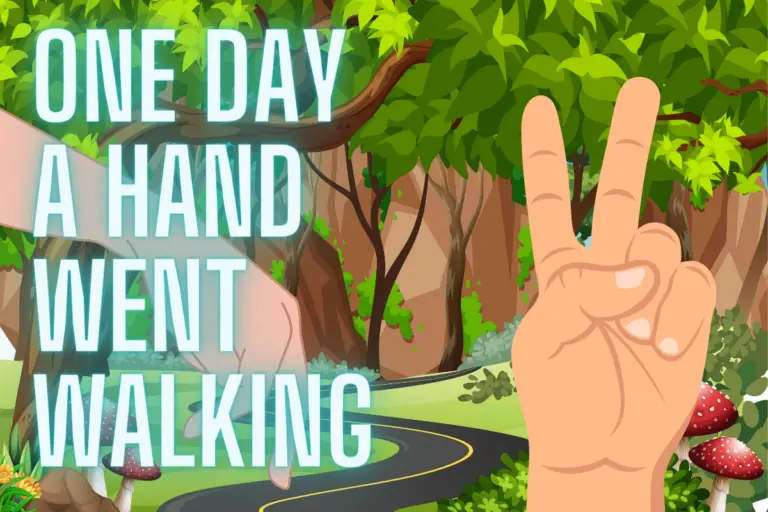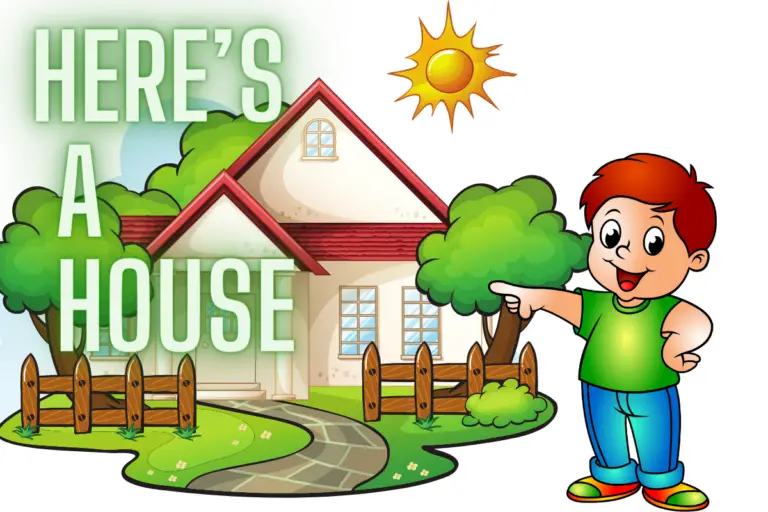Baa Baa Black Sheep, Lucy Locket lost her Pocket and Humpty Dumpty all seem like sweet and simple children’s nursery rhymes, but is there more to them than meets the eye? Do nursery rhymes have secret meanings behind their innocent exterior?
Many nursery rhymes do have a secret meaning behind them. They were once satirical, subversive folk songs about historical events or the despised conduct of leaders. Behind these lie darker tales of cowardice, greed, immorality, cruelty, religious persecution, execution, sickness, and death. But most nursery rhymes were created just as innocent entertainment for children.

If this is the case, then why do we sing them to children and which nursery rhymes are really a cover up for things we don’t want to introduce children to at an early age? Keep reading as we delve into the research of many historians, librarians and literary hobbyists and what they believe to be the true meanings behind the rhymes and tunes we sing to our children to entertain, calm and nurse them to sleep.
WARNING:
Unlike most of the content on Nursery Rhyme Central, the information contained in this article is not for children. The content has been created as a resource for parents and educators to empower them in knowing exactly what they are teaching and sharing with their children as well as for interest.
- Why do Nursery Rhymes have hidden meanings?
- Why do we sing Nursery Rhymes with Secret Meanings to Children?
- The Forgotten Histories of Nursery Rhymes
- A Word of Caution…
- Three Blind Mice
- Mary, Mary Quite Contrary
- Humpty Dumpty
- Pop Goes the Weasel
- Who Killed Cock Robin?
- Doctor Foster
- Little Jack Horner
- London Bridge Is Falling Down
- Baa Baa Black Sheep
- Goosey Goosey Gander
- Georgy Porgy
- Lucy Locket
- Ride A Cock Horse To Banbury Cross
- Should you keep singing Nursery Rhymes to your Children?
- Further Reading….
Why do Nursery Rhymes have hidden meanings?
Some nursery rhymes have hidden meanings because they generally hide political drama and parodies of historical events, propaganda, veiled criticisms of those in power, or messages of discontent and come from times when to speak of such things openly was punishable by death.
Popular books like The Oxford Dictionary of Nursery Rhymes by Iona and Peter Opie, Heavy Words Lightly Thrown by Chris Roberts, Pop Goes The Weasel: The Secret Meanings of Nursery Rhymes by Albert Jack, and The Secret History Of Nursery Rhymes by Linda Alchin explore the origins of traditional nursery rhymes with often surprising results.
Why do we sing Nursery Rhymes with Secret Meanings to Children?
We sing these nursery rhymes to children because not all the tunes we sing to them were originally made for children. Some were folk songs and poems sung and told in pubs and taverns, told on stage in plays or for entertainment in printed pamphlets and magazines, that over time, as we have forgotten their history, have become appropriate for children. Using song and poetry was a way to disguise and share opinions and stories by the disgruntled people of the past to avoid jail and punishment by those in authority – by making them fun and playful. We sing them so innocently today to children – just as many did in the past to share their stories and histories, because they do not have the same meaning to us at this point of history.

The Forgotten Histories of Nursery Rhymes
Therefore to understand the secret meanings of nursery rhymes, it is necessary to go back hundreds of years to when they were first sung or chanted. Since they are the creations of people who lived centuries ago, they reflect their life and times. Nursery rhymes are much older than the term’ nursery rhyme’ itself which only dates from the late 18th or early 19th century.
Some English nursery rhymes go back as far as the fourteenth century, while some are from the 15th, 16th, and 17th centuries. Most of the classics still known today come from the eighteenth century. The music for the nursery rhyme, Three Blind Mice, has been found in a compilation of folk songs by Thomas Ravencroft that dates from 1609.
Nursery rhymes have a strong oral tradition, and many were sung as folk songs long before they were written down. ‘To market to market to buy a fat hen’ and was first published in 1598, ‘Cock-a-doodle-doo, my dame has lost her shoe’ first appeared in a murder pamphlet in England in 1606 and likely dates from before then in the oral tradition.
Murder pamphlets were printed documents that recounted purportedly true stories of dark crimes. They ranged from matter-of-fact journalism to sensationalism and described crimes of murder, witchcraft, sex, and adultery. Many were accompanied by woodcuts depicting grisly scenes.
The Roud Folk Song Index lists almost twenty-five thousand songs in the English language assembled from oral tradition by librarian Steve Roud. Many nursery rhymes appear in this index because they were sung as folk songs. In the 16th century, they began to be recorded in English plays. For example, Pat-a-cake Pat-a-cake appears in a 1698 play by Thomas d’Urfey called The Campaigners.
In 1780, Thomas Carnan used the term ‘Mother Goose’ in connection with nursery rhymes in his compilation titled Mother Goose’s Melody, or Sonnets for the Cradle. However, it first appeared earlier in the 18th century in a translation of a French fairy tale collection called Contes de ma Mère l’Oye (Tales of my Mother Goose) into English. It later came to be identified with collections of English nursery rhymes and stories and since then has become synonymous with nursery rhymes.
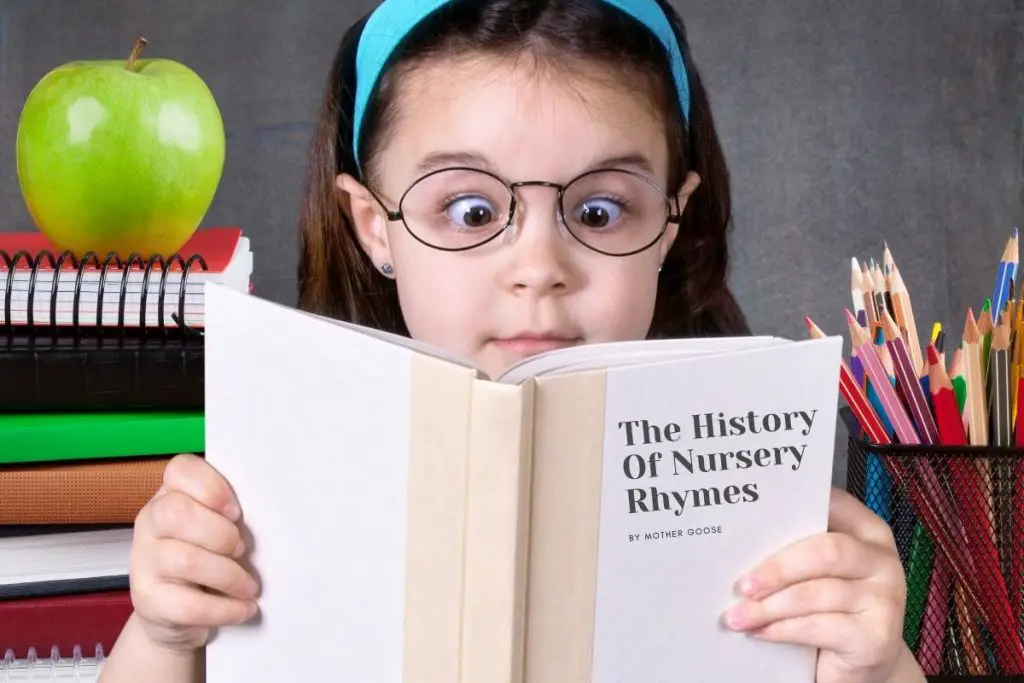
‘Ring-a-Ring-a-Roses’ is thought to originate from the Great Plague of London that killed around one hundred thousand people in 1665. The roses in the rhyme depict the reddish round rash that was a symptom of the bubonic plague, while the pocket full of posies was a bunch of herbs used to ward off the disease and its stench. The words, ‘Atishoo, atishoo we all fall down,’ refer to the coughing and sneezing symptoms quickly followed by death.
Jack Sprat, Lavender’s Blue, and The Grand Old Duke of York originate from the 17th century. The last is a mocking reference to the defeat of Richard, Duke of York, in the Wars of the Roses, more specifically, the battle of Wakefield in 1460. The wars were between the house of York and the house of Lancaster, which used white and red roses respectively as their symbols, and lasted more than thirty years.
A Word of Caution…
I have found that in researching and reading about the histories of the following nursery rhymes that you have to take it all with a grain of salt. Many of the events that historians, librarians and literary aficionados claim to be the source of the rhymes sometimes happened well before or after they can pin point evidence of the nursery rhymes actually existing. There are several reasons for this, the main one being that many of the rhymes were only printed or written down once the form had become more available and therefore prior to this they were orally handed from one to another. Another reason is that new meanings were constantly placed on the rhymes dependent on the events occurring during different periods of time in history.
Three Blind Mice
This nursery rhyme allegedly tells a dark tale about the persecution of protestants by the Catholics during the reign of Mary I. She was the queen of England from 1553 to 1558, when she was executed.
A devout catholic, she attempted to restore to the Roman Catholic Church property confiscated by previous protestant monarchs. Her nickname was ‘Bloody Mary’ because she killed so many protestants during her reign. Mary disputed her protestant half-sister Elizabeth’s claim to the English throne.
Elizabeth’s father, Henry VIII, had cut ties with the Catholic Church because it forbade divorce, and he formed the Church of England in its stead. He wanted to divorce his first wife, the Catholic Catherine of Aragon, to marry Elizabeth’s mother, Anne Boleyn. Mary was the offspring of Henry VIII and Catherine. However, the nursery rhyme can only be traced as far back as 1609 in published form, years after Queen Mary died.
It is a musical round, meant to be sung by two or more groups of voices, one starting when the previous group reaches a particular part of the song.
In the nursery rhyme, the ‘Three Blind Mice’ are thought to be three Anglican bishops called the Oxford Martyrs who were accused of blindly following their protestant beliefs. They were Hugh Latimer, one time Bishop of Worcester, Nicholas Ridley, Bishop of London, and Thomas Cranmer, Archbishop of Canterbury. Mary (the farmer’s wife who cut off their tails with a carving knife in the rhyme) had them burned at the stake for heresy in 1555 and 1556.
People were usually blindfolded when they were executed, which could also explain why the mice are blind.
Mary, Mary Quite Contrary
Mary, Mary Quite Contrary is another gruesome nursery rhyme about Queen Mary I. The garden refers to the graveyard in which all the protestants she killed are buried. The phrase, ‘How does your garden grow?’ asks how she adds the corpses of her enemies to it. The ‘silver bells and cockle shells’ are euphemisms for the instruments of torture that Mary used on them. Silver bells were thumbscrews that crushed the thumb bones between two metal plates, and cockle shells were applied to a victim’s genitals, causing pain.
Mary is contrary because she is trying to reverse the ecclesiastical changes wrought by the protestant Church of England founded by her father, King Henry VIII, and wants the country to revert to catholicism. She is also contrary because murdering people is contrary to christian teaching. The ‘garden’ can also be a reference to England, her kingdom, which she is nourishing with the blood of protestants.
Humpty Dumpty
Humpty Dumpty was originally a riddle and you can read all about it in our article here about the nursery rhyme. But some historians believe that Humpty Dumpty came to have other secret meanings for others throughout history.
During the English Civil War, the Royalists were so-called because they supported King Charles I, while the Roundheads wanted a parliament to govern the people. The king’s men in the nursery rhyme are the Royalists, led by Sir George Lisle and Sir Charles Lucas, who had overpowered the Roundheads in Colchester in 1648.
The Roundheads, led by Thomas Fairfax, besieged the town but took a pounding for weeks from the Royalist’s cannon on top of the church tower of St Mary-at-the-Walls. The cannon’s name was Humpty Dumpty. Eventually, the Roundheads managed to blow off the top of the church tower, and Humpty Dumpty fell into the deep marshlands below where it couldn’t be put together again by the Royalists.
Pop Goes the Weasel
Pop Goes The Weasel started life as a popular dance tune. It originates from London and references the City Road and a pub called the Eagle in the second verse, which may be less familiar and which goes –
Up and down the City Road,
In and out the Eagle
That’s the way the money goes,
Pop goes the weasel.
People lived in poverty in those days, and the nursery rhyme is thought to be referring to the pawning of a coat to obtain money for food (half a pound of tuppenny rice and half a pound of treacle). At its worst, the rhyme is about financial ruin, as the second verse could be referring to the fact that food money is short, but someone keeps spending it on drink, thus the need to pawn the coat.
Cockney rhyming slang was a common form of speech that used rhyming words to signify what was actually meant. Therefore, a ‘weasel and stoat’ was a coat and was often shortened to just ‘weasel’. The word ‘pop’ was colloquial language for pawning something, so when the weasel goes pop, it means the coat is being pawned.
Who Killed Cock Robin?
The first few lines go as follows –
Who killed Cock Robin? I said the Sparrow
With my bow and arrow, I killed Cock Robin.
Who saw him die? I said the Fly,
With my little eye, I saw him die.
Who caught his blood? I said the Fish
With my little dish, I caught his blood.
Who’ll make his shroud? I said the Beetle
With my thread and needle, I’ll make his shroud
This delightful nursery rhyme, which deals at length with the murder and funeral of Cock Robin and the various animals involved in the service, is actually a mournful English folk song. It ends with ‘all the birds of the air fell a-sighing and a-sobbing when they heard the bell toll for poor Cock Robin’. It was first published in 1744 in Tommy Thumb’s Pretty Song Book, but there is evidence of its being far older. It is similar to a story from 1508 by John Skelton called Phyllyp Sparowe.
Various theories try to explain who Cock Robin was in real life. Some say he was Robin Hood, while others maintain that the song is a parody of the death of King William III, who was killed by an arrow while out hunting in Hampshire in 1100. He was known as William Rufus, which means red, and a cock robin has a red breast.
Still others argue that it describes the fall of Robert Walpole’s government in 1742 because ‘Robin’ is a diminutive for ‘Robert’. Last but not least, it has been speculated that the reference to Cock Robin is an anglicization of the Welsh ‘Coch Rhi Ben’, a name for the sun god, Lugh. ‘Coch’ means red, and ‘ben’ means leader. The Welsh believed that people became birds after they died.
Doctor Foster
Doctor Foster went to Gloucester
in a shower of rain,
he stepped in a puddle,
right up to his middle
and never went there again
The doctor Foster who went to Gloucester is thought to reference King Edward I of England, and the nursery rhyme is probably more than seven hundred years old. King Edward didn’t like the Welsh and engaged in some brutal conduct towards them in a couple of wars and their aftermath. He was a temperamental, clever man, over six feet tall, which was unusual for his day. One of his nicknames was Longshanks, but he had several others.
The title ‘doctor’ referred to the king’s reputation for learning and was usually applied to learned men in those days, not only members of the medical profession.
The story goes that he visited the town of Gloucester because of its strategic position at a crossing of the River Severn into Wales. Arriving during a storm, he mistook a deep ditch for a shallow puddle, and he and his horse fell into it and became trapped in the mire. They both had to be hauled out by the people, much to the king’s embarrassment and fury, and so he vowed never to return. Thus, the nursery rhyme is poking mocking fun at him by reminding people of his indignity.
Little Jack Horner
Little Jack Horner
Sat in the corner
Eating his Christmas Pie
He put in his thumb
And pulled out a plumb
And said, ‘What a good boy am I!’
Little Jack Horner is associated with opportunistic acts in politics and was first mentioned in the 18th century. Jack Horner is a reference to a steward to the abbot of Glastonbury called Thomas Horner. The abbot sent him to London with a Christmas pie to be delivered to King Henry VIII. The title deeds to twelve manor houses were allegedly hidden in the pie as a surprise gift.
The abbot was trying to ingratiate himself with the king, who was busy dissolving the Catholic monasteries following his rift with the Pope. King Henry VIII abandoned the Roman Catholic church for political reasons and founded the Church of England, headed by himself.
Horner put his finger in the pie on the way there and extracted the deed for Mells Manor, which he moved into shortly afterward. Thus he opportunistically availed himself and his descendants of the manor house to which he was not, strictly speaking, entitled. His descendants have disputed this besmirching of their ancestor’s good name and claim he purchased the property fair and square from the king.
London Bridge Is Falling Down
London Bridge is Falling Down goes back to 1659 and was so popular many countries have their own version of it. One theory says that it originates from the destruction of the bridge in 1014 by a Viking who later became King Olaf II of Norway. If this is true, then the song has roots going back a thousand years. Olaf tied ropes to the pilings and rowed downstream, causing the fragile bridge and the defenders standing on it to fall into the river Thames.
Another far more sinister theory is that the song refers to the burial of a child in the bridge’s foundations due to the superstition that a human sacrifice was necessary to stop it from collapsing. Archaeological evidence does not support this theory as human remains have not been found in the bridge’s foundations.
Baa Baa Black Sheep
‘The Great Custom’ was a tax that was paid on wool and introduced in England in 1275. The tax continued to be served until the fifteenth century. Scholars generally agree that this is where the nursery rhyme comes from. However, it can only be traced back to 1744 in its printed form. The black sheep is being interrogated probably by the tax collector – thus ‘have you any wool’?
The Great Custom decreed that the price of a bag of wool was to be split three ways, one for the king, one for the church, and one for the farmer. The last line, ‘and one for the little boy who lives down the lane’, is more modern than the original ‘and none for the little boy who lives down the lane’, meaning that sheep farmers had nothing left for themselves after paying the tax. Perhaps king and church took more than they were supposed to.
The irony is that black sheep’s wool was less valuable than white sheep’s wool because it couldn’t be dyed. The king and the church thus insisted on their share of even the cheapest wool on the market.
Goosey Goosey Gander
Goosey Goosey Gander is just a funny little tale about wandering upstairs and downstairs and in my lady’s chamber, right? Maybe on the surface, but some say that it harks back to when King Henry VIII and Queen Elizabeth persecuted Catholic priests. It was so bad they had to hide in secret cavities, called priest holes, in the walls of wealthy sympathizers’ houses.
Georgy Porgy
Georgy Porgy pudding and pie kissed the girls and made them cry. Whoever he was, he sounds a lot like some high-profile men in today’s society who are being called to task for their disrespect of women.
The earliest printed version of this nursery rhyme appears in 1841. Some speculate that it refers to George Villiers, the son of an unimportant nobleman and a lover of King James I. The verse ridicules their romantic interest in each other. George, however, was apparently bi-sexual as he had numerous affairs at court with the young women, some of whom were wives and daughters of powerful English nobles.
He seems to have been something of a pest, forcing his unwelcome attentions on the ladies, which is why they cried when he kissed them. His antics made him less than popular with the other men at court, which is why he reportedly ran away when the boys came out to play, but the king’s affection offered him some protection. However, the pudding and pie reference to Georgy Porgy suggests that he was fat and liked his food a little too much.
Thus, the other possibility is that Georgy Porgy was George IV, the highly obese son of King George III, who lived from 1762 to 1830. He was constantly mocked for the corsets he wore in an attempt to slim down his appearance. In 1824 he weighed two hundred and forty-five pounds, and his corsets had a fifty-inch waist. Women who attended his parties were advised not to be caught alone with him because of his tendency to treat them with disrespect.
He had several illegitimate children and mistresses and was accused of bigamy. He had an official wife that he detested and an unofficial wife that he couldn’t marry because she was a commoner. King George IV was widely despised for his physical and emotional cowardice, evidenced when he fled from a prizefight in which one contestant died because he was scared that he would be caught up in the fallout. That is why he ran away when the boys came out to play.
Lucy Locket
Lucy Locket lost her pocket
Kitty Fisher found it
Not a penny was there in it
Just the ribbon round it
It has been theorized that Lucy and Kitty were real people and 18th-century prostitutes at that. The ‘pocket’ is said to refer to one of Lucy’s customers. She ‘dropped’ him when he could no longer pay for her services. Kitty Fisher, another prostitute, was willing to service him despite his lack of funds. In the rhyme, the ‘ribbon’ refers to the common practice that prostitutes used to keep their money safe – a ribbon that tied their purse around the thigh.
A real woman called Kitty Fisher lived in the eighteenth century whose portrait was painted by renowned artist Joshua Reynolds, but there is no trace of Lucy Locket. The rhyme perhaps accuses Kitty of stealing the money in Lucy’s pocket before returning it to her. Kitty Fisher was a prominent English courtesan – a prostitute with upper-class, wealthy clients.
An alternative, more savory interpretation is that the two women lived in London in the 18th century when it was the custom to stash a pouch of cash underneath the skirts, tied around the waist with a ribbon. Lucy’s purse became detached, and Kitty found it. There is no mention of prostitutes in this version.
Ride A Cock Horse To Banbury Cross
‘Ride a cock horse to Banbury Cross to see a fine lady upon a white horse,’ says the rhyme. What is a cock horse, and who is the fine lady? One theory is that she was Celia Fiennes, the author of a travel journal, who lived between 1662 and 1741. She would ride her horse around Britain to see places of interest and record her journeys.
The words “fine lady” could even have been “Fiennes lady” initially, after her surname. She had a brother who lived in Banbury in Broughton Castle, which is why Banbury Cross is mentioned in the poem. She would ride her horse to visit him. A cock horse was either a little toy horse or an adult’s knee that the child would ride as a parent or caregiver recited the nursery rhyme, so it was intended to be playful.
Another theory is that the poem refers to Lady Godiva, who rode a horse naked through the streets of Coventry covered only by her long hair. She wore bells on her fingers and toes to warn the people that she was coming so that they would hide their faces from her nudity. Despite her actions, historical records show that she was a very pious lady.
She did this because her husband, Leofric, was imposing oppressive taxes on the town, and she took pity on the people, repeatedly begging him to lower them. Eventually, he lost patience and said that he would do it if she rode naked on a horse through the streets. After sending out a proclamation that everyone must stay inside with doors and windows shut, she rode nude through the town.
Only one person, a tailor, disobeyed and stole a peek, earning himself the appellation, ‘Peeping Tom’ forever afterward.
Lady Godiva’s story is almost a thousand years old as she is believed to have died between 1066 and 1086. Historians don’t regard the tale of her riding naked through the town as plausible. Since the legend was first recorded only in the 13th century, a couple of hundred years later, they might be right.
Should you keep singing Nursery Rhymes to your Children?
So should you stop singing these nursery rhymes to children? The history behind the nursery rhymes tells a fascinating tale all its own. Nursery rhymes can be innocent enough for children but many have a deeper, darker meaning for adults who know their meaning. Therein lies their magic and why they remain part of our culture and childhood. But at the end of the day, I really have to ask myself if reciting Lucy Locket lost her pocket as bad as singing baby shark over and over again? I guess the choice is up to you!
Further Reading….
This has been just a short review of the secret meanings of nursery rhymes and if you head through the pages of Nursery Rhyme Central, you can read everything you want to know about your favorite nursery rhymes whether it be they have a secret meaning or just what some of the Old English words mean, to activities you can do with your kids based on the rhymes.
